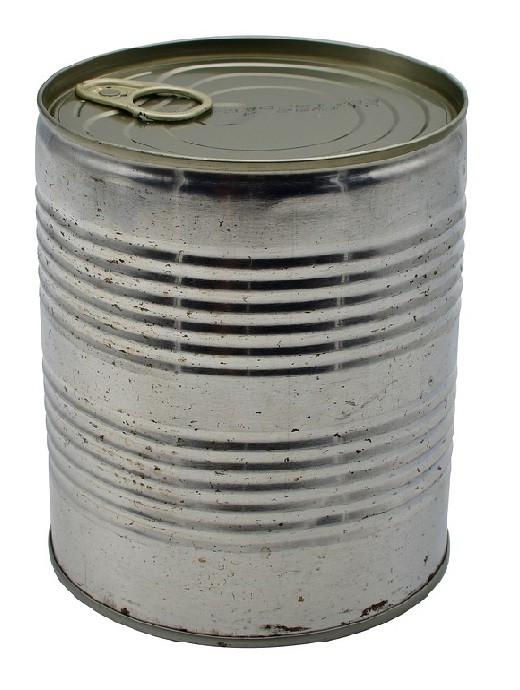Automotive Shop Waste Management: Protecting the Environment Through Proper Disposal
Understand automotive shop waste
Automotive repair and maintenance facilities generate various waste products every day. These materials range from use motor oil and antifreeze to brake fluids, solvents, and clean agents. While essential for vehicle maintenance, these substances contain chemicals that can gravely damage ecosystems, contaminate water supplies, and pose health risks to humans and wildlife when improperly handle.
The environmental protection agency (eEPA)classify many automotive fluids and materials as hazardous waste, subject them to strict disposal regulations. Shop owners and technicians must understand these classifications to maintain compliance and environmental responsibility.
Common hazardous materials in auto shops
Use motor oil
One of the near common waste products in automotive shops is use motor oil. A single oil change produce roughly 4 5 quarts of use oil, which contain heavy metals, detergents, and other contaminants pick up during engine operation.
Environmental impact: one gallon of improperly dispose motor oil can contaminate up to one million gallons of freshwater. When pour onto the ground or into drains, it finally reaches waterways, create toxic conditions for aquatic life and potentially enter drinking water supplies.
Antifreeze
Antifreeze typically contain ethylene glycol or propylene glycol, chemicals that provide freeze protection for vehicle cool systems. Use antifreeze accumulate heavy metals from engine components and become a hazardous waste product.

Source: pinterest.com
Environmental impact: antifreeze have a sweet taste that attract animals but is extremely toxic if ingested. When ienterser waterways, depletesete oxygen levels and harm aquatic ecosystems. Additionally, the heavy metalscontainstain can accumulate in the food chain.
Brake fluid
Brake fluid is a hydraulic fluid that enable the transfer of force in brake systems. Most brake fluids are glycol ether base and become contaminate with metals and moisture during use.
Environmental impact: brake fluid is corrosive and can damage soil structure and plant life. It’s too toxic to aquatic organisms and can contaminate groundwater.
Solvents and degreases
Automotive shops use various solvents and degreases to clean parts and tools. These products oftentimes contain volatile organic compounds ((ovows)nd other chemicals that pose environmental hazards.
Environmental impact: solvents can evaporate, contribute to air pollution and potentially cause respiratory issues. When they enter soil or water, they can persist for long periods, cause long term contamination issues.
Use batteries
Automotive batteries contain lead, sulfuric acid, and plastic components. Their improper disposal present serious environmental and health risks.
Environmental impact: battery acid can gravely damage ecosystems, while lead is a potent neurotoxin that can contaminate soil and water sources for decades.
Shop rags and absorbents
Materials used to clean up spills or wipe down parts become contaminate with the substances they absorb, transform them into potentially hazardous waste.
Environmental impact: disposal in regular trash can lead to landfill contamination and potential groundwater pollution as hazardous substances leach out.
Proper disposal methods
Use oil management
Proper handling of use oil involve collection in leakproof containers clear mark as ” se oil. ” maManyuto parts retailers and service centers accept use oil for recycling. Instead, certify waste management companies can collect it.
Recycle potential: use oil can be re refined into new lubricating oil, process into fuel oils, or use as raw materials in petroleum industries. Recycling use oil require but virtually one third the energy need to refine crude oil to lubricant quality.
Antifreeze recycling
Used antifreeze should be store in dedicated containers separate from other fluids. On site recycling units can filter and restore antifreeze for reuse, or it can be collect by waste management services.
Recycling process: filtration and distillation processes remove contaminants and restore the antifreeze’s protective properties. This importantly reduce waste while save money on new product purchases.
Brake fluid disposal
Brake fluid require collection in separate containers and handling as hazardous waste. It should ne’er be mixed with other automotive fluids, as this can complicate recycling processes.
Disposal options: licensed hazardous waste handlers can process brake fluid through specialized treatment facilities that neutralize harmful components.
Solvent and cleaner management
Shops can reduce solvent waste by use filtration systems that extend solvent life. When disposal become necessary, these chemicals must be handled as hazardous waste.
Alternative options: water base and bio base cleaning products offer environmentally friendlier alternatives to traditional petroleum base solvents while distillery provide effective cleaning power.
Battery recycling
Most all components of automotive batteries can be recycled. Retailers that sell batteries typically accept use ones for recycling, and many offer core credits toward new battery purchases.
Recycle success: the automotive battery recycling program is one of the nearly successful recycling programs in the United States, with a recovery rate exceed 99 % in many areas.
Contaminated materials handling
Shop rags, absorbents, and other materials contaminate with hazardous substances require proper disposal through license waste management services.
Reduction strategies: reusable shop towel services can importantly reduce waste from disposable rags, while specialized laundry processes remove contaminants safely.
Regulatory compliance
Federal regulations
The resource conservation and recovery act (rBCRA)establish the framework for proper management of hazardous and nonon-hazardousaste. Auto shops must comply with epEPAegulations regard the identification, storage, transportation, and disposal of hazardous materials.
Generator status: shops are classified as very small quantity generator((sagss), small quantity generators ((qsags)or large quantity generators ( l(slegs)e on the amount of hazardous waste they produce monthly. Each category have specific compliance requirements.
State and local requirements
Many states and municipalities have additional regulations that may be more stringent than federal requirements. Local environmental agencies or waste management departments can provide guidance on specific regional requirements.
Permit considerations: depend on location and operations, shops may need permits for waste generation, storage, or treatment activities.
Documentation and record keeping
Maintain proper documentation is crucial for regulatory compliance. This includes waste manifests, recycle receipts, training records, and inspection logs.
Audit preparedness: comprehensive records demonstrate due diligence in environmental compliance and provide protection during regulatory inspections.
Best practices for automotive shops
Waste reduction strategies
Implement waste minimization practices can importantly reduce environmental impact while lower disposal costs. Strategies include:
- Purchase products in bulk to reduce packaging waste
- Use refillable spray bottles alternatively of aerosol products
- Install parts washers with filtration systems to extend solvent life
- Implement inventory controls to prevent products from expire before use
- Training staff on proper measuring and application to prevent overuse
Spill prevention and response
Prevent spills is invariably preferable to clean up. Effective spill prevention include:
- Use secondary containment for fluid storage areas
- Install berms around waste storage zones
- Maintain equipment to prevent leaks
- Use funnels and pumps for fluid transfers
- Keep spill kits pronto accessible throughout the facility
When spills do occur, prompt and proper response prevent environmental contamination and workplace hazards.
Staff training
Comprehensive training ensure all employees understand proper handling procedures and environmental responsibilities. Training should cover:
- Identification of hazardous materials
- Proper storage and handle techniques
- Spill response procedures
- Waste segregation requirements
- Documentation processes
Regular refresher training keep environmental protection at the forefront of daily operations.
Implement a waste management plan
A formal waste management plan provide structure and accountability for proper waste handling. The plan should:
- Identify all waste streams generate by the facility
- Specify proper handling procedures for each waste type
- Designate responsible personnel for waste management tasks
- Establish inspection and audit schedules
- Include emergency response procedures
Regularly review and update the plan ensure continued compliance and effectiveness.
Benefits of proper waste management
Environmental protection
The primary benefit of proper waste management is environmental protection. By prevent hazardous materials from enter soil, water, and air, automotive shops contribute to ecosystem preservation and public health protection.
Regulatory compliance and avoid penalties
Proper waste management ensure compliance with environmental regulations, help shops avoid costly fines and penalties. EPA violations can result in penalties of tens of thousands of dollars per day for serious infractions.
Cost savings
While implement proper waste management practices require investment, it frequently results in long term cost savings through:
- Reduced waste disposal fees
- Lower insurance premiums
- Avoid cleanup costs from improper disposal
- Prevention of potential liability for environmental damage
- Resource conservation through recycling and reuse
Enhanced business reputation
Consumers progressively value environmental responsibility. Shops that demonstrate commitment to proper waste management can attract environmentally conscious customers and distinguish themselves from competitors.
Marketing potential: certification programs like green business or automotive service excellence (aASE)blue seal can showcase environmental commitments to potential customers.
Emerge trends in automotive waste management
Eco-friendly alternatives
The automotive industry continue to develop more environmentally friendly products and processes:
- Bio base lubricants derive from renewable resources
- Water base cleaning solutions with reduced VOC content
- Propylene glycol antifreeze as a less toxic alternative to ethylene glycol
- Aqueous parts washers that eliminate solvent use
Advanced recycling technologies
Technological advances continue to improve recycling capabilities:
- On site filtration systems that extend fluid life
- Distillation equipment for solvent recovery
- Oil re refining processes that produce higher quality recycle oil
- Automated fluid separation technologies
Digital waste tracking and reporting
Digital solutions streamline compliance and improve waste management efficiency:

Source: actenviro.com
- Electronic manifest systems for waste shipments
- Mobile apps for waste tracking and documentation
- Cloud base compliance management platforms
- QR code systems for container identification and tracking
Resources for automotive shops
EPA and state environmental agencies
Government agencies provide valuable guidance on compliance requirements and best practices. The EPA’s website offer specific resources for automotive repair shops, include self audit checklists and waste management guides.
Industry associations
Organizations like the automotive service association (aASA)and the coordinating committee for automotive repair ( (acaro)er environmental compliance assistance, training programs, and certification opportunities.
Waste management service providers
Licensed waste management companies offer collection, transportation, and disposal services for automotive waste. Many provide compliance assistance and documentation to help shops meet regulatory requirements.
Conclusion
The materials use in automotive shops represent both essential tools for vehicle maintenance and potential environmental hazards. By implement proper waste management practices, automotive professionals can protect the environment, ensure regulatory compliance, reduce costs, and enhance their business reputation.
The responsibility for environmental protection extend to everyone in the automotive industry. Through education, proper handling procedures, and commitment to continuous improvement, automotive shops can minimize their environmental footprint while maintain profitable operations.
As environmental awareness will continue to grow and regulations will evolve, will stay will inform about best practices and will emerge technologies will help automotive shops will navigate the complex landscape of waste management while will contribute to a healthier planet.



